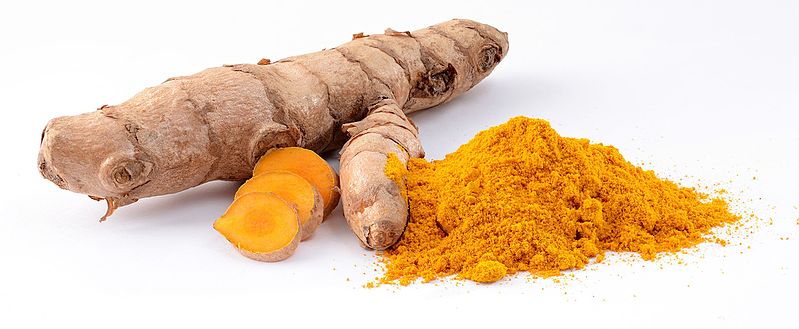Certain culinary spices we’ve traditionally loved in food also have been known in herbal medicine since ancient times for their remarkable healing properties. Below are quotations from culinary artists and herbalists who value the spice and herb turmeric, known botanically as Curcuma longa.

Turmeric, Curuma longa
Herbalist Maria Noel Groves, author, about the herb’s medicinal value, says:
“Turmeric root and Schizandra berry are incredibly useful herbs that come from the distant lands of India and China, respectively. They have the unique ability to both stimulate liver detoxification… while also protecting and healing the liver itself… “ p. 99 in Body Into Balance: an Herbal Guide to Holistic Self-Care, 2016.
Groves adds that protecting and healing the liver “builds over time…”. A good thing to remember is that while culinary use of the spice might not have therapeutic effects, the spice is actually helping your digestive system all along.
Dr. Deanna Minich, author, about how to use the herb in food, says that Turmeric and Black Pepper contain compounds that together combine to make the turmeric usable by the body. She says:
“…when these two spices are paired together, there is synergy: more curcumin (turmeric’s healing compound) gets into the body than it does by itself. Try grinding some black pepper and mixing it with turmeric powder. To create a magical trio, add some fat, like coconut oil or extra-virgin olive oil, because the fat helps the absorption too.” in “Spice Savvy”, p. 190 Whole Detox, a 21-day Personalized Program to Break Through Barriers in Every Area of Your Life, 2016. See my review of this book.
Aromatherapist, Julia Lawless, author, says about turmeric essential oil that it is produced by:
“Extraction: Essential oil is produced by steam distillation from the ‘cured’ rhizome—boiled, cleaned and sun-dried… Employed in perfumery work for oriental and fantasy-type fragrances. The oleoresin is used as a flavor ingredient in some foods, mainly curries, meat products and condiments.” p 195, The Encyclopedia of Essential Oils, 2013, c1992.
Author and publisher Jill Norman says about turmeric that the spice is sold either fresh, dried or ground:
“Combines well with chili, cilantro, cloves, coconut milk, coriander, cumin, curry leaf, fennel, galangal, garlic, ginger, kaffir lime leaves, lemongrass, mustard seeds, paprika, pepper, rau ram.” p 197 Herbs and Spices: the Cook’s Reference, 2015, c2002. See description at Goodreads.com
Drs. Asa Hershoff and Andrea Rotelli, authors, say about turmeric that it is useful in treating quite a variety of conditions and diseases. They list turmeric (curcumin) as a superior herb for cases of arteriosclerosis, arthritis, cancer (of the mouth, stomach, duodendum, colon), cholesterol, fibromyalgia, gallbladder, hay fever/allergies, inflammation, and injury or wounds. Also indicated is curcumin, as a very good herb, in cases of heart conditions and high blood pressure. – from Herbal Remedies, a Quick and Easy Guide to Common Disorders and Their Herbal Treatments, 2001.
David Molony, author, says about turmeric:
“Common usages are in formulas to relieve pain, and in Oriental Medicine for Blood and Qi stasis.
Common formulas are Bupleurum, Inula and Cypress (for stress-related gastrointestinal symptoms); Qiang-Huo and Turmeric Formula (used chiefly for joint pain & stiffness of the upper back, neck and wrist)” p 108 The American Association of Oriental Medicine’s Complete Guide to Chinese Herbal Medicine, 1998.
Drs. David Frawley and Vasant Lad, authors, says about turmeric that it affects all tissue-elements (of the body) and digestive, circulatory and respiratory systems:
“Turmeric promotes proper metabolism in the body, correcting both excesses and deficiencies. It aids in the digestion of proteins… It is effective for cleansing the chakras, purifying the channels of the subtle body. It helps stretch the ligaments and is, therefore, good for the practice of Hatha Yoga.” p 150 The Yoga of Herbs, 1986
To be continued…
Follow



[…] Recall Tanita de Ruijt’s tonic recipe? Actually, spiced milks and chais are considered tonics, too. It just depends on the emphasis you give a particular spice. And if it’s turmeric, you’re going to curate your recipe to emphasize the healing benefits of this spice. You can read more about turmeric’s properties here. […]